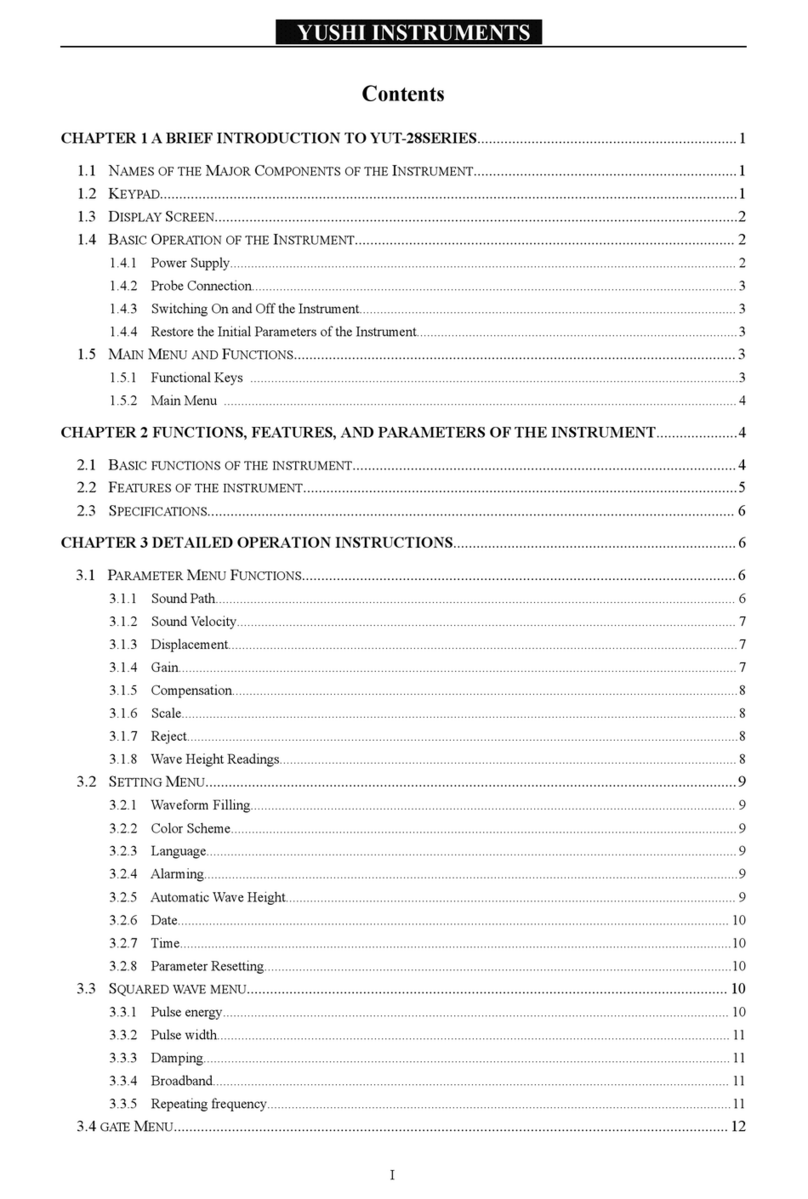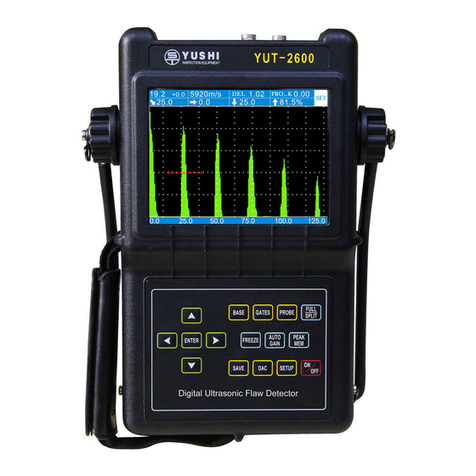Content
1. General Information of the Gauge .....................................................1
1.1 Construction of the Gauge ....................................................... 2
1.2 Standard Configuration .............................................................3
1.3 Optional Configurations ............................................................3
1.4 Specifications ............................................................................3
1.5 Main Functions ......................................................................... 4
2. Keyboard Functions ........................................................................... 6
3. Measuring Thickness ......................................................................... 7
3.1 Instrument Calibration .............................................................. 7
3.1.1 One Point Calibration .....................................................7
3.1.2 Velocity Adjusting Steps .................................................8
3.2 Parameter Configuration Interface ........................................ 9
3.3 Normal Mode .......................................................................... 12
3.4 A-Scan Interface Mode ...........................................................14
3.5 Example Explanation of A-SCAN ...........................................17
3.6 Operation of B-Scan Interface ................................................19
3.6.1 B-Scan Display .............................................................19
3.6.2 Introduction of B-Scan ................................................. 19
3.7 Dual-Echo (Thru-Thin Coating) Mode ....................................20
3.7.1 A-scan Interface In Dual-Echo Mode ...........................20
3.8 Interface wave-Echo Mode .....................................................21
3.9 Multiple-wave check method(High Precision Mode) ............. 21
3.9.1 Illustration of Multiple-wave check mode .....................21
3.10 AUTO Mode .......................................................................... 22
4.Date Storage Function ......................................................................22
4.1Thickness Value and Waveform Storage ................................23
4.2 Browsing the Storage Data .................................................... 23
5.Measurement Apply Skills .................................................................24
5.1 Measuring Error Prevention ................................................... 24
5.2 Measuring Methods ................................................................ 25
6. Care and Maintenance .....................................................................25
6.1 Power Source Inspection ....................................................... 25
6.2 Considerations ........................................................................25
6.3 Maintenance ........................................................................... 26
Sound Velocity Measurement Chart ....................................................27
































